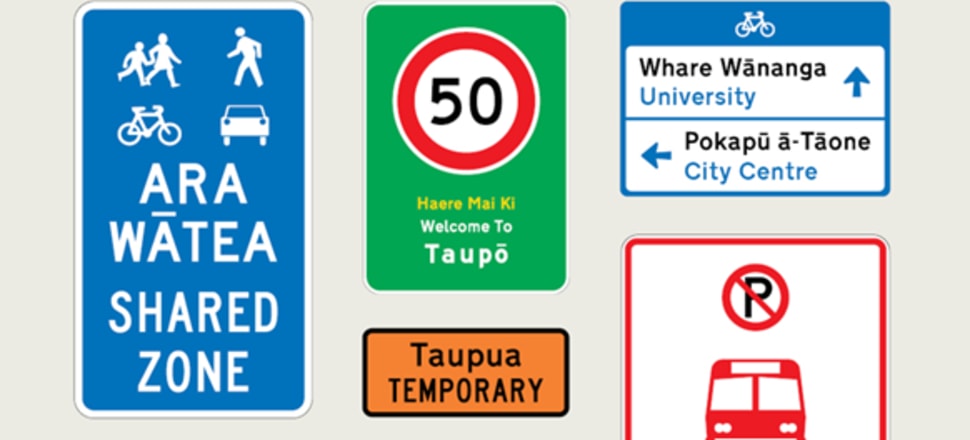
A proposal to put te reo Māori on New Zealand's road signs has sparked outcries at the cost and the confusion bilingual signage could bring. But as The Detail finds out, bilingual signage has been around for decades — and it works.
In Wales, bilingual signage is everywhere.
"You've got road signs — it's Welsh first and English second," says Kiwi-Welsh Stuff journalist Catrin Owen.
"Signs on public buildings, so schools, offices, councils, the government, it's also through courts."
As New Zealand debates a proposal to make road signs bilingual, are there lessons that can be learned from the revitalisation of indigenous languages in Wales and Ireland?
Just 18 percent of the Welsh population speaks Welsh, but the Welsh Language Acts — the first in 1967 and the second in 1993 — put Welsh on an equal footing with English and began undoing centuries of suppression of the language.
More recent changes have required Welsh to be displayed first, before English, on road signs.

"When my nain, my grandma, was at school, she wasn't allowed to speak Welsh. They did all their lessons in English," Owen says.
"In the 19th Century, quite a few years before my grandma was born, students would be punished for speaking Welsh and they would carry around a wooden sign with a 'WN' ['Welsh not'] on... so if you were caught speaking Welsh, you would be caned, beaten, get that sign around you.''
The Welsh language is now treated as a taonga and every school in Wales has to teach it.
Owen was born and raised in Ynys Môn (Anglesey in English). She moved to New Zealand in 2011, aged 16.
Her father is Welsh, her mother Kiwi. She has two first languages.
"I would speak Welsh with my dad, English with my mum, so I think my brain was a bit confused," she tells The Detail.
"I go between both [languages] even now, living in New Zealand. My mum had to learn Welsh to be able to work as a teacher where we grew up."
Diarmaid Coffey is the chair of Conradh na Gaeilge, or Gaelic League Aotearoa, a local organisation that promotes the Irish language.
"There has been a connection over the years between te reo Māori and Irish. They're both languages that have declined as a result of English, as a result of colonisation.
"The vast majority of people in Ireland are very supportive of the language and wish they had more opportunities to speak it. It is a language that has a generally positive meaning for people in Ireland."

Coffey grew up in south-western Ireland, in an English-speaking household, and went to an English-speaking school.
"My exposure to Irish was through my schooling, where Irish is a compulsory language right from when you start school to when you leave ... two to two-and-a-half hours a week," he says.
"People finishing school will usually have a reasonable standard of Irish and be able to carry on a conversation, but then you leave school and there's nowhere to speak it."
There have been government initiatives to revitalise the language and make the country more bilingual.
But it was an experience in New Zealand that got Coffey interested in speaking the language again. He was at the café in the Wellington City Library when he heard an Irish family speaking nearby.
"I stood up and turned around and went over to them and was ready to dazzle them with my Irish. I opened my mouth and I realised I hadn't the foggiest idea of what to say. I'd forgotten everything."
Although Irish is growing in popularity and use, a minority still argue against revitalisation policies, Coffey says.
"The arguments you hear will focus on the cost, it's too expensive."
There are similar arguments in New Zealand, but he believes these are "fallacious".
"My feeling, and from discussing [bilingual signs] with people and looking online... is that the vast majority of [New Zealand] people will support it.
"It's a really good thing for the country. It will be something that tourists and travellers to the country will love to see. It gives a great point of difference, it's a good thing to do for the language."
Consultation closes at 5pm, Friday 30 June 2023.
Find out more about the realities of bilingual signage in Wales and Ireland by listening to the full episode.
Check out how to listen to and follow The Detail here.
You can also stay up-to-date by liking us on Facebook or following us on Twitter.








